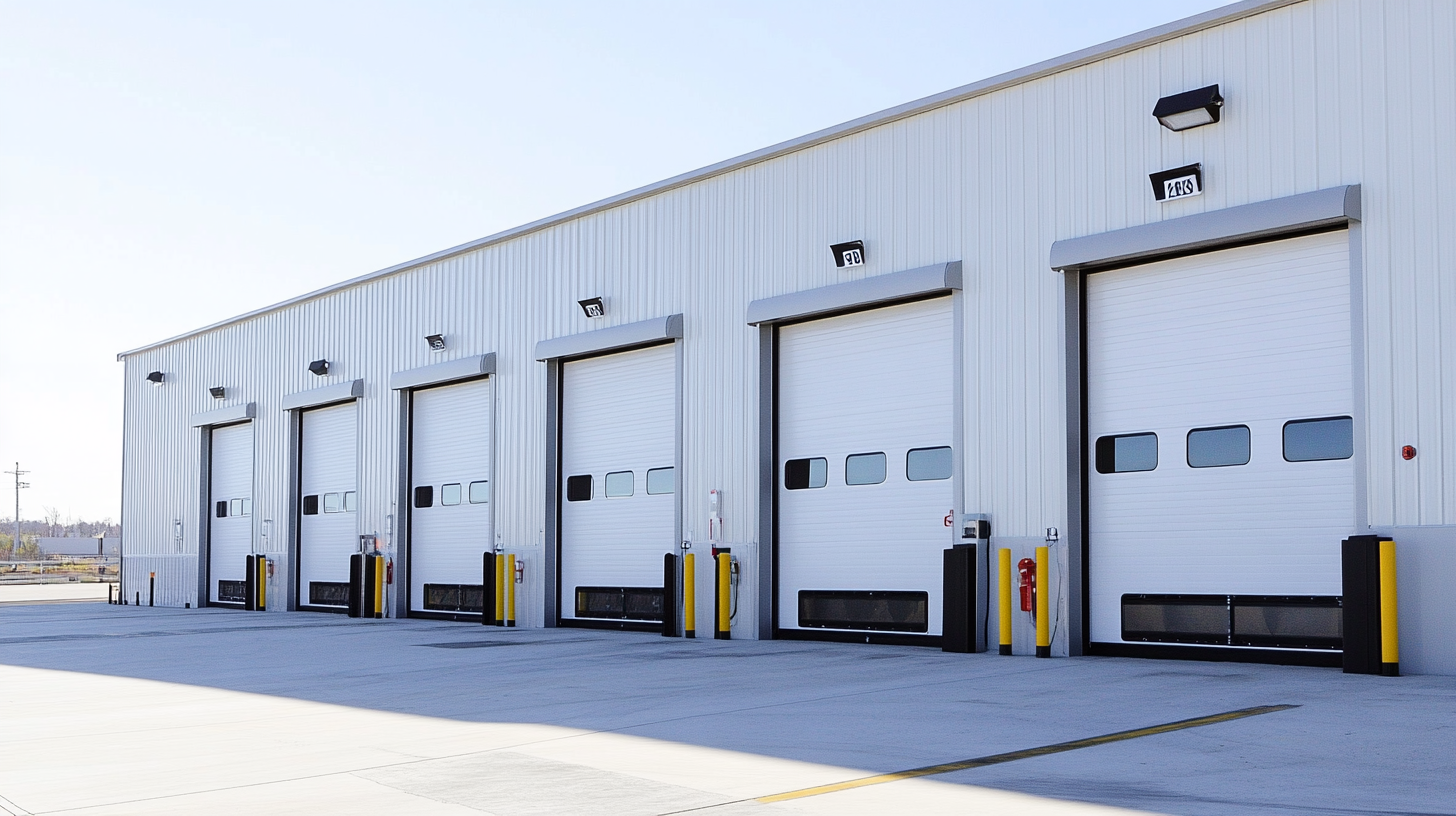Future Trends in Door Shop Equipment Market Analysis for Global Buyers by 2025
Door Shop Equipment market is the other avenue among all the sectors, which is expected to bring significant changes by the year of 2025 in the manufacturing and construction industries. When looking into future trends in this emerging sector, it becomes necessary for every global buyer to investigate the innovations that are available on improving operational efficiency and quality. This study will investigate some of the emerging technologies, consumer preferences, and competitive dynamics driving the Door Shop Equipment landscape, offering insights that can guide action among stakeholders.
Advanced Door Shop Equipment is sought after not only for greater productivity, but also for the awareness of sustainability and cost-effectiveness. Manufacturers would invest in smarter and more efficient equipment capable of the manifold requirements necessitated by the changing market. The emerging developments and strategic opportunities within the Door Shop Equipment market are anticipated to help guide global buyers through the market's dynamic environment to capture growth avenues as we approach 2025.

Impact of Technological Advancements on Door Shop Equipment Innovations by 2025
Second, advancements in technology are being felt more and more in a changing door shop equipment market. With the innovations expected by the year 2025, the technological front will revolutionize product offerings and operational efficiencies in a given sector. Innovative materials and intelligent technologies could help develop more durable, secure, and user-friendly door solutions. Automation and AI are already being trialed among companies in this sector, allowing the industries to position themselves to meet the rising demand for customized and high-performance products. One such trend involves using AI to personalize the customer experience and allow for greater production streamlining. For example, OPPO's MoE technology has introduced cutting-edge advancements whereby real-time data is processed for device frontend operations. These advancements are promising in terms of new industrial applications. These technologies enhance the operation of the door shops while yielding innovative services and product lines. With companies adopting them, they may gain a foothold in the global scene. Sustainability, however, is influencing designers' equipment and process choices as well. As consumers act more environmentally conscious, manufacturers will face demands to match this trend with the incorporation of eco-friendly materials and energy-efficient methodologies into their offerings. Such advancements coupled with green practices will drastically influence the future of the door shop equipment market, thereby necessitating global buyers to remain updated on such tendencies in their planning for 2025 and beyond.

Analysis of Market Dynamics and Consumer Preferences in the Door Equipment Sector
From a growing world of door-shop equipment, it is necessary for global buyers to know what consumer preferences are all about leading into 2025. The demand for door equipment such as roller shutters is rapidly changing due to changing consumer habits and market forces. Presently, front-mounted roller shutters seem in vogue, whether in manual or electrical versions. The product line has been diversified to meet various ends, reflecting the consumer propensity towards greater automation and convenience.
Direct-to-consumer online selling has emerged as another dimension of this market shift. More often than not, consumers are ordering their door equipment online and want to know about pricing and specifications. This transition has given power to the buyers, enabling them to make informed decisions based on live reviews and comparisons. Also, with increasing consideration for sustainability among the consumers, manufacturers have been incorporating green materials such as aluminum for roller shutters, which also form part of the product choice
Going by the trends hypothesized, worldwide sales of door equipment with uplifted consumer preference will grow hugely. Probably, those companies that are going to embrace such market dynamics with new products and trends toward e-commerce demand are more likely to take the lead. Over the Turf, the rapidly increasing significance of aesthetics and functionality means a radical transformation for future door shop equipment, which is going to define new lines of consumer satisfaction.

Projected Growth Rates and Revenue Forecasts for the Global Door Shop Equipment Market
It is likely that by 2025, this door shop equipment market will grow significantly as construction and demand for customized door solutions increase all over. As per the latest assessments, the future demand for door shop equipment is expected to increase, and revenue forecasts are seeing considerable expansion. Industry insights forecast the role of technological innovations and investment from capitalists as critical drivers emerging for this market, equipping the manufacturers to improve their efficacy and product offerings.
Alongside this, the wider logistics sector is to post a compound annual growth rate (CAGR) of 7.2% from 2024 to 2030, with a projected market size of approximately USD 3794.4 billion by 2023. As door shop equipment should be covered with the expansion, the company needs supply chains to be efficient enough to bear the load of that market growth.
The world semiconductor industry is, in addition, projected to have phenomenal growth of approximately 19% this coming year, rising up to sales of about USD 627 billion in 2024. This is important because semiconductors make possible all modern equipment, especially those meant for advanced door manufacturing. These markets' plunge into one another strongly suggests that all stakeholders in the door shop equipment market should remain dynamic enough to benefit from soon-to-be-here trends and maximize their presence in the market by 2025.

Sustainability Trends Influencing Door Shop Equipment Design and Manufacturing
At the shop door equipment market, sustainability has become a trend and a major guiding force in designs and manufacturing. Environmental awareness increases among consumers and regulators, making companies pursue avenues for reducing their carbon footprints in many areas-. But this trend or sustaining principle for which nowadays companies are developing equipment doesn't only mean it's about trends; it has become a fundamental approach to how modern-day equipment will operate. Manufacturers adopt eco-friendly materials, energy-efficient systems, and production techniques that minimize waste and make operations sustainable.
This commitment to sustainability is reflected in further innovations in door shop equipment. For example, using recycled materials during production has gained popularity among manufacturers, helping them reduce their dependence on virgin materials. New and emerging technology also facilitated the generation of more energy-efficient machines, which operate at lower power levels, thereby degrading more minor amounts of greenhouse gases. This creates an avenue for companies to meet their requirements under environmental laws and attract a budding clientele of green consumers.
Another thing that manufacturers are doing is incorporating modular and pluralistic designs to prolong the life of an installation by lessening the load it exerts on maintenance. That way, consumption would be minimized while providing easy access to upgrades and repairs, thus waste would be less. Thus, for the industry, 2025 will see sustainability becoming increasingly integrated into design practice and further transforming the market into a more productive one for all buyers at global levels in regard to door shop equipment.
Key Players and Competitive Landscape in the Door Equipment Market by 2025
The door equipment market is transforming at a high speed towards 2025. At the heart of the transformation are the competitive forces operating under a number of dominant players creating innovations in the industry. The focus of manufacturers to enhance product offerings has mostly shifted towards smart technologies and compliance with growing safety regulations. This trend satisfies consumer aspirations for security and connectivity and dovetails with broader smart home initiatives.
In addition, the market has a tendency to focus more on sustainability. The sustainability caliber is growing among firms that are investing in eco-friendly materials and processes to further reduce their carbon footprint. Sustainability has become one such critical differentiator in a highly cluttered environment. Consumers have become more inclined toward brands that act ethically, providing their consumers with durable, eco-friendly merchandises.
In the coming years, perhaps the interaction between well-known brands and emerging startups will redefine competition in the door equipment sector. The amalgamation of strong industry knowledge and rapid agility to solve problems injects innovation in these partnerships, which further diversify product offerings for global buyers of advanced door solutions.
